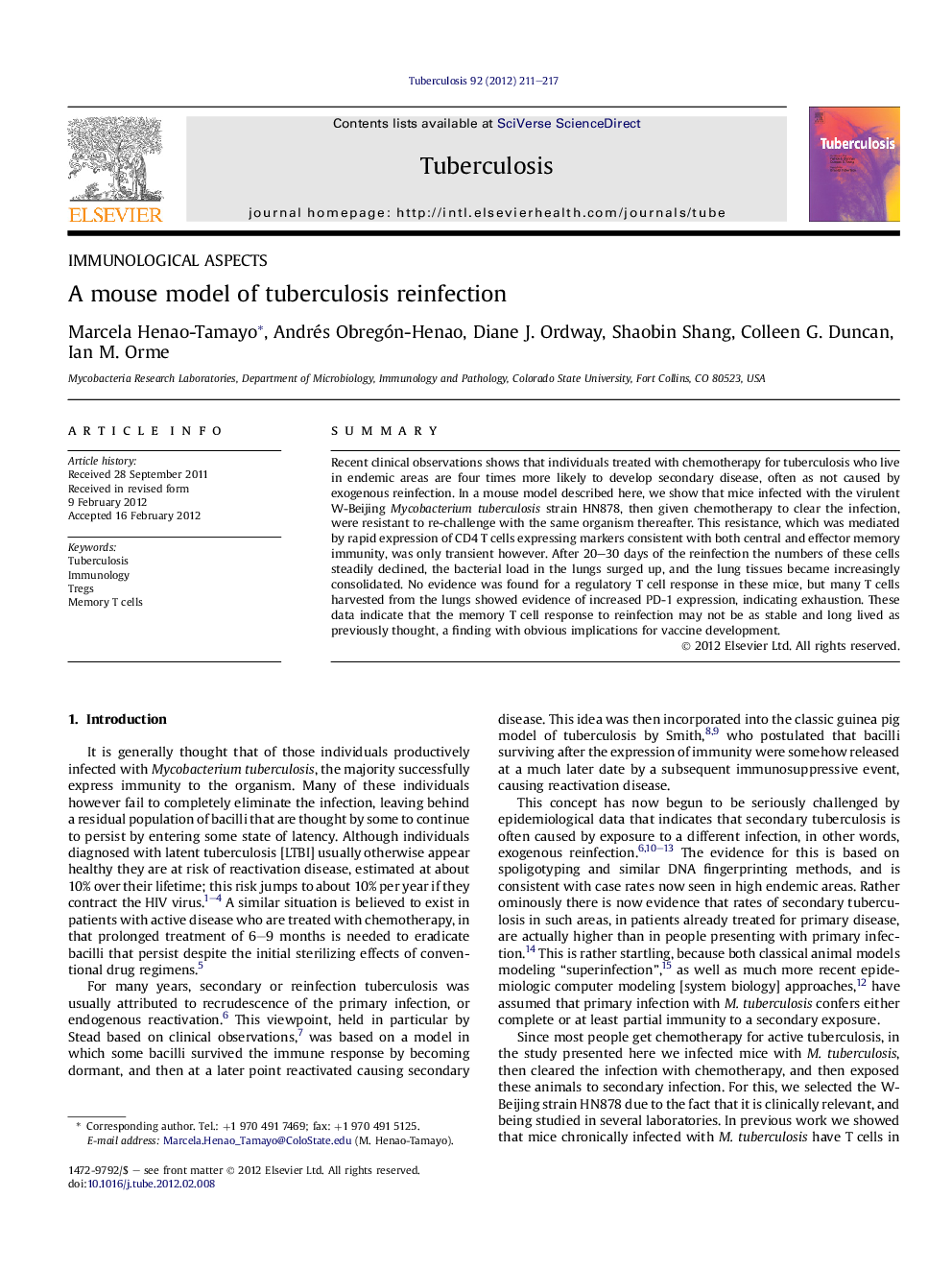| Article ID | Journal | Published Year | Pages | File Type |
|---|---|---|---|---|
| 2401574 | Tuberculosis | 2012 | 7 Pages |
SummaryRecent clinical observations shows that individuals treated with chemotherapy for tuberculosis who live in endemic areas are four times more likely to develop secondary disease, often as not caused by exogenous reinfection. In a mouse model described here, we show that mice infected with the virulent W-Beijing Mycobacterium tuberculosis strain HN878, then given chemotherapy to clear the infection, were resistant to re-challenge with the same organism thereafter. This resistance, which was mediated by rapid expression of CD4 T cells expressing markers consistent with both central and effector memory immunity, was only transient however. After 20–30 days of the reinfection the numbers of these cells steadily declined, the bacterial load in the lungs surged up, and the lung tissues became increasingly consolidated. No evidence was found for a regulatory T cell response in these mice, but many T cells harvested from the lungs showed evidence of increased PD-1 expression, indicating exhaustion. These data indicate that the memory T cell response to reinfection may not be as stable and long lived as previously thought, a finding with obvious implications for vaccine development.
